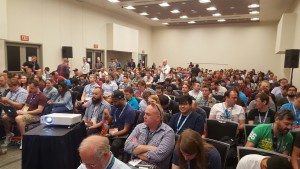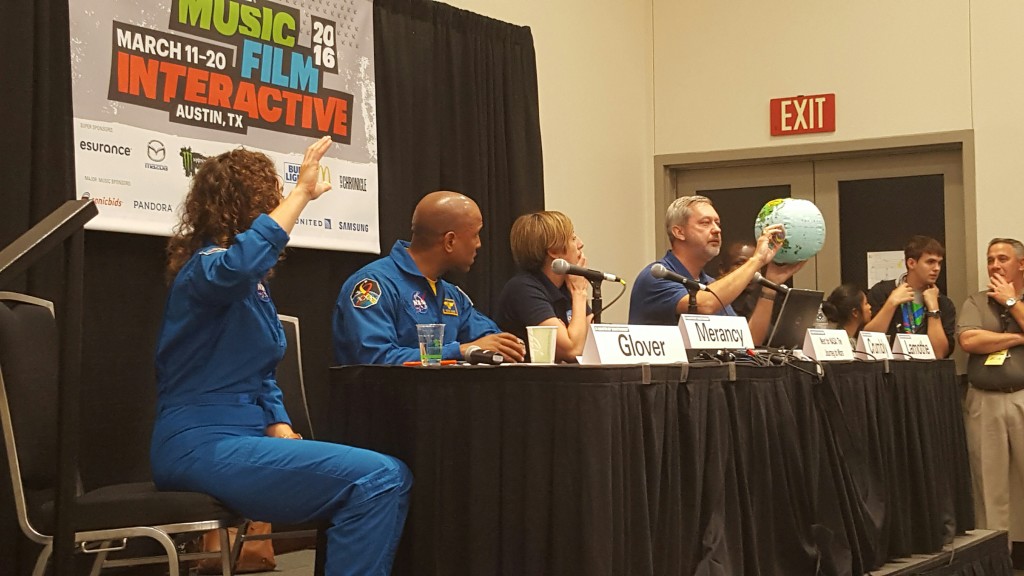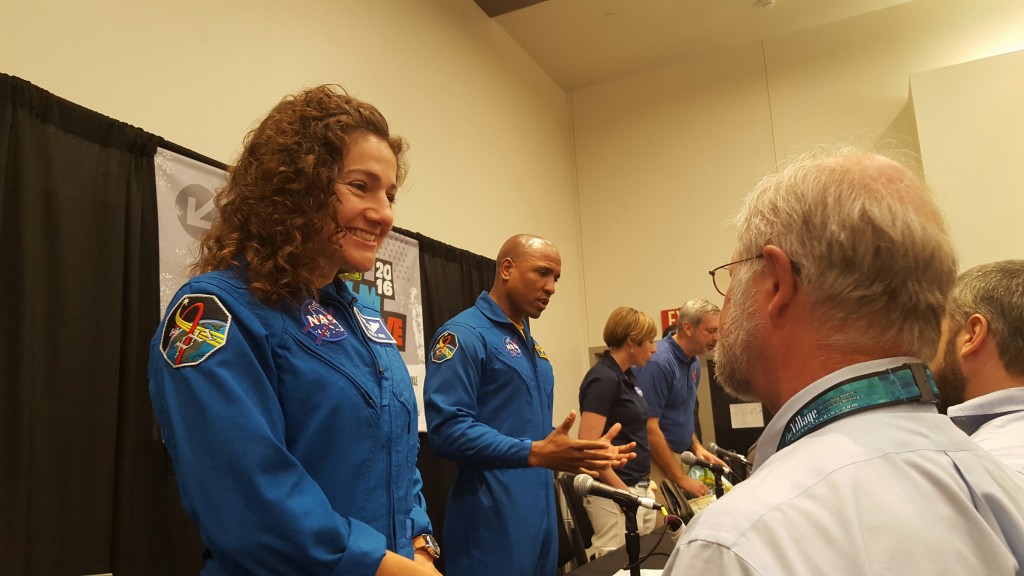NASA is planning for the 2023 manned trip into deep space and around the moon. Then, what they hope to be a decade later, the trip to Mars. Astronauts Jessica Meir and Victor Glover, Lead Systems Engineer Yves Lamothe, Orion Mission Planner Nujoud Merancy and Spacecraft Integration and Evolution Manager Chris Crumbly all participated in the panel, “Next For NASA: The Journey to Mars.”

The panel discussed some of the biggest challenges, some of which are technical, including the technology, design and science-related hurdles.
But the big picture is simply that humans are not meant to live in space. We need air, water, food and more.
“The weak link is us,” Glover said. “We have to protect our body from radiation…our body is one of the greatest challenges we have to overcome.”
The panel said that they are still gathering data on the effects of being in space long-term. Meir said Scott Kelly and his recent return from a year in space is also adding to that information.
Kelly has been back for about two weeks and says his skin has been burning with irritation from the way clothes maintain contact with skin back on earth – which he hasn’t experienced for a year in space.
Meir said in space the skin doesn’t shed onto everything we touch because there’s not constant contact.
“Eventually in space it comes off in one big piece,” she said. The audience of the panel groaned.
There are other health stats and data that NASA has gathered pertaining to joints, muscles, even vision. The exercise equipment on a spacecraft is effective in helping astronauts keep their muscle mass, and often return with more muscle, Meir said.

More than just taking care of their own well being, the astronauts have to be able to take care of the ship, know how to fix things, know fluent Russian, among a variety of other skills. They also have to learn to get along.
The team might be spending months to years with each other in a tight space, so they need to effectively communicate and work together to do their job.
“We’ve been doing a much better job of doing these things… so we don’t kill the mission because we want to kill each other,” said Meir.
All the panelists expressed gratitude that everyone on their team works well together – and a large contributor is their shared enthusiasm for their work.
“It’s for everybody. It’s for all of you,” Lamothe said. “We’re public servants. We have to understand how all of us, with all our differences, can operate whatever’s out there.”
But the first step to Mars is Orion, the shuttle that will eventually take humans to Mars, but for 2018, will be doing an expedition to the Moon. Merancy is the planning lead for this mission.
NASA is already building the module for the expected 2018 launch.
Merancy says these modules take 3-4 years to build since everything is constructed by hand – there’s no assembly line, she said.

Space (inside the module) is the biggest issue when constructing a ship to go into (outer) space. Every bit of space has to be utilized to take all the necessities to survive in space (food, water, oxygen, etc.) as well as the systems to operate the ship, and enough fuel to not only get to Mars, but to be able to return to earth as well.
“We love the earth and the loves us back…and it wants to hold us,” Crumbly said about the force (and fuel) needed to get off the earth. After the first 20 minutes though, he says the shuttle will coast the rest of the way, until it needs to actively slow down as it approaches Mars.
The infrastructure of the Kennedy Space Center and the launch pad is also being redone to accommodate the shuttle for years to come, and what they expect to be many more trips, not only for NASA, but for the public as well.
“We’re going because we say we should go to Mars,” Glover said. “It’s the willing of the American people wanting us to go.”
Glover says the most important thing anyone can do to support the mission is to share their enthusiasm.
The panelists closed the panel with a question about the journey to Mars being an American or international mission.
At this point, they said, no one expects just one country to be able to do it alone.
And Glover and Meir’s dream to accomplish during their career? They want to see the earth from space.
“The selfish thing I want to do is stand on the surface of the moon and watch the earth rise,” said Glover. “That’s my dream.”
Watch our interviews with Merancy and Meir:
